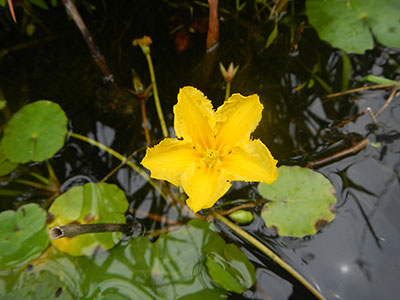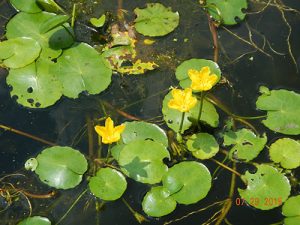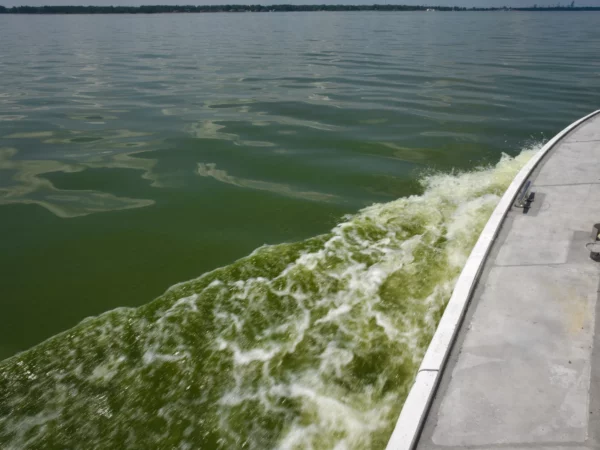
Do you really know what’s in your garden or pond? Does your landscaper know if that beautiful new plant is native to your area? Possibly not. A West Michigan homeowner recently learned why that can be a serious problem after a water lily-like invasive plant known as Yellow Floating Heart took over his pond.
“We are not completely sure how the invasive Yellow Floating Heart found its way into this pond, only that it was planted there at some point before the current homeowner purchased the house,” explained Drew Rayner, coordinator for the West Michigan Cooperative Invasive Species Management Area (CISMA).
As Rayner’s CISMA team discovered, this infestation originated from a scattering of 41 potted plants placed along the concrete bottom of this custom pond.
Much like another new West Michigan invasive, European Frog-bit, Floating Yellow Heart grows thick in dense patches along the water’s surface, crowding out native species. The often-impenetrable growth creates areas of low oxygen beneath the surface that can prevent fish from spawning. Mats grow to the point of making any recreational activity, be it swimming, kayaking, or boating, impossible.

The infestation was extensive. Rayner’s team manually removed an incredible 2,400 pounds of plant over the course of two long, painstaking days. You read that right: 2,400 pounds of plant. Some mats grew so thick that it took multiple people to even lift them up.
At first glance, Yellow Floating Heart appears as a peaceful, lily-like plant with beautiful bright yellow flowers rising on stalks from the water’s surface complete with five petals distinctly arranged like spokes on a wheel.
Rayner was able to remove the infestation at no cost to the homeowner thanks to a collection of state and federal grants for land and water management. All pots and plants were taken to a designated invasive species disposal site and stored according to proper guidelines in order to prevent any future spread.
It’s not difficult to see why an unsuspecting person or company would choose to place it on a property. But it is listed as a prohibited species under Michigan’s Natural Resources Environmental Protection Act (Part 413 of Act 451), which means it is unlawful to possess, introduce, import, sell or offer that species for sale as a live organism.
However, that has not always been the case and they may have found their way into your community prior to the ban.
If we are to stop invasive species in their tracks, we need your help. There is no such thing as an isolated pond or garden. Help keep our waters free by checking if you have an invasive species on your property?
The State of Michigan makes it easy to check. Visit www.michigan.gov/invasives for more information on recognizing invasive species.
Do you think you’ve found an invasive species? Find your local CISMA here and let them know.






